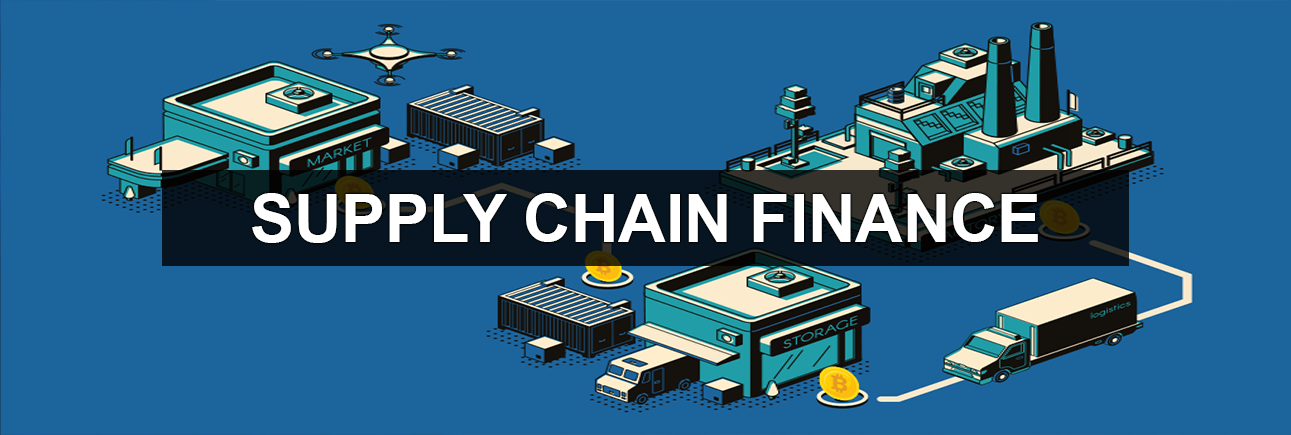Introduction to Supply Chain Finance
Welcome to our detailed exploration of supply chain finance, presented by CA Vikas Jain. In this blog, we will uncover the essential aspects of supply chain finance, a powerful financial solution that optimizes cash flow and strengthens business relationships within supply chains. Whether you're a supplier, a buyer, or simply interested in understanding how this financing mechanism works, you'll find valuable insights and practical information here.
Frequently Asked Questions (FAQ)
Q1: What is supply chain finance?
Q2: How does supply chain finance benefit businesses?
Q3: What are the different types of supply chain finance solutions?
Q4: How can companies implement supply chain finance?
Q5: What factors should businesses consider when opting for supply chain finance?
In the sections to follow, we will answer these questions comprehensively, shedding light on the advantages, implementation strategies, and critical considerations of supply chain finance. Stay with us as we delve into this vital financial tool that enhances liquidity, reduces risk, and fosters stronger partnerships within the supply chain ecosystem.
Understanding Supply Chain Finance: A Comprehensive Guide
Introduction
In the dynamic world of business, maintaining a healthy cash flow is crucial for the survival and growth of companies. One of the innovative solutions that has gained prominence in recent years is Supply Chain Finance (SCF). This financial arrangement optimizes working capital by allowing both suppliers and buyers to benefit from extended payment terms and early payment discounts. In this blog, we will explore the intricacies of Supply Chain Finance, its benefits, key components, and how businesses can effectively implement it.
What is Supply Chain Finance?
Supply Chain Finance, also known as reverse factoring, is a set of solutions that optimizes cash flow by allowing businesses to extend their payment terms to their suppliers while enabling suppliers to get paid earlier. This is facilitated by financial institutions or third-party platforms that bridge the payment gap, ensuring liquidity for suppliers and operational efficiency for buyers.
Key Components of Supply Chain Finance
- Buyers: Typically larger companies with strong credit ratings that purchase goods or services from suppliers. They are the initiators of the SCF program.
- Suppliers: Usually smaller businesses that provide goods or services to the buyers. They benefit from early payments through SCF.
- Financial Institutions: Banks or fintech companies that offer SCF solutions, providing early payments to suppliers at a discount and collecting payments from buyers at a later date.
- Technology Platforms: Digital platforms that facilitate SCF transactions, providing transparency, automation, and efficiency in the process.
How Supply Chain Finance Works
- Invoice Approval: The supplier delivers goods or services to the buyer and submits an invoice for approval.
- Approval and Offer: Once the buyer approves the invoice, it is uploaded to the SCF platform. The financial institution offers to pay the supplier early at a discount.
- Supplier Decision: The supplier decides whether to accept the early payment offer. If accepted, the financial institution pays the supplier the invoice amount minus a small fee.
- Buyer Payment: The buyer pays the full invoice amount to the financial institution on the agreed-upon due date, which is typically extended compared to standard payment terms.
Benefits of Supply Chain Finance
For Buyers
- Improved Working Capital: By extending payment terms, buyers can retain cash longer, improving their liquidity.
- Stronger Supplier Relationships: Offering SCF options can enhance relationships with suppliers by providing them with access to early payments.
- Cost Efficiency: Leveraging SCF can be more cost-effective than traditional financing methods.
For Suppliers
- Enhanced Cash Flow: Early payments improve cash flow, allowing suppliers to reinvest in their businesses and manage their operations smoothly.
- Reduced Financing Costs: SCF typically offers lower costs compared to traditional financing options like loans or lines of credit.
- Credit Risk Mitigation: Suppliers can mitigate the risk of buyer default by receiving payments from financial institutions.
For Financial Institutions
- Revenue Generation: Financial institutions earn fees from providing SCF services.
- Risk Management: SCF offers a lower risk profile as transactions are backed by invoices from creditworthy buyers.
- Market Expansion: SCF allows financial institutions to expand their services to a broader range of businesses.
Implementing Supply Chain Finance
Steps to Successful Implementation
- Assess Needs and Objectives: Understand the specific needs of your supply chain and set clear objectives for the SCF program.
- Choose the Right Partner: Select a reliable financial institution or fintech platform that offers comprehensive SCF solutions.
- Engage Stakeholders: Involve key stakeholders, including finance, procurement, and supplier relationship teams, to ensure alignment and support.
- Pilot Program: Start with a pilot program to test the SCF solution with a small group of suppliers and refine the process based on feedback.
- Scale Up: Gradually expand the SCF program to include more suppliers and larger transaction volumes, continuously monitoring and optimizing performance.
Challenges and Considerations
- Adoption Barriers: Suppliers may be hesitant to participate in SCF programs due to unfamiliarity or concerns about costs.
- Technological Integration: Ensuring seamless integration between the SCF platform and existing ERP systems can be challenging.
- Regulatory Compliance: Adhering to regulatory requirements and maintaining transparency is crucial in SCF transactions.
- Cost Management: Both buyers and suppliers need to carefully manage the costs associated with SCF to ensure it remains beneficial.
Conclusion
Supply Chain Finance is a powerful tool that can significantly enhance the financial health and operational efficiency of businesses. By leveraging SCF, buyers can improve their working capital, suppliers can access early payments, and financial institutions can expand their service offerings. However, successful implementation requires careful planning, stakeholder engagement, and continuous optimization. As businesses navigate the complexities of global supply chains, SCF stands out as a strategic solution to foster growth and resilience.

